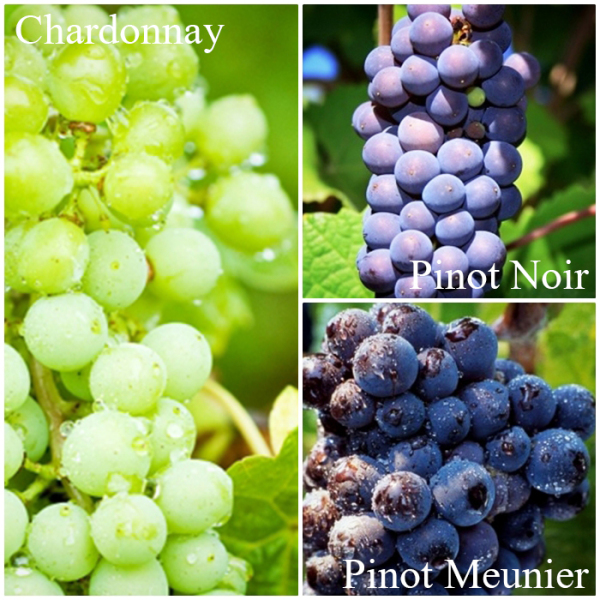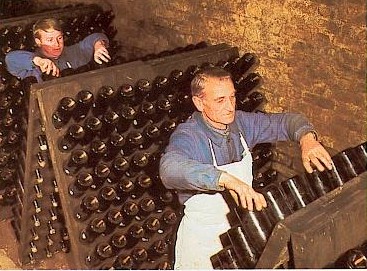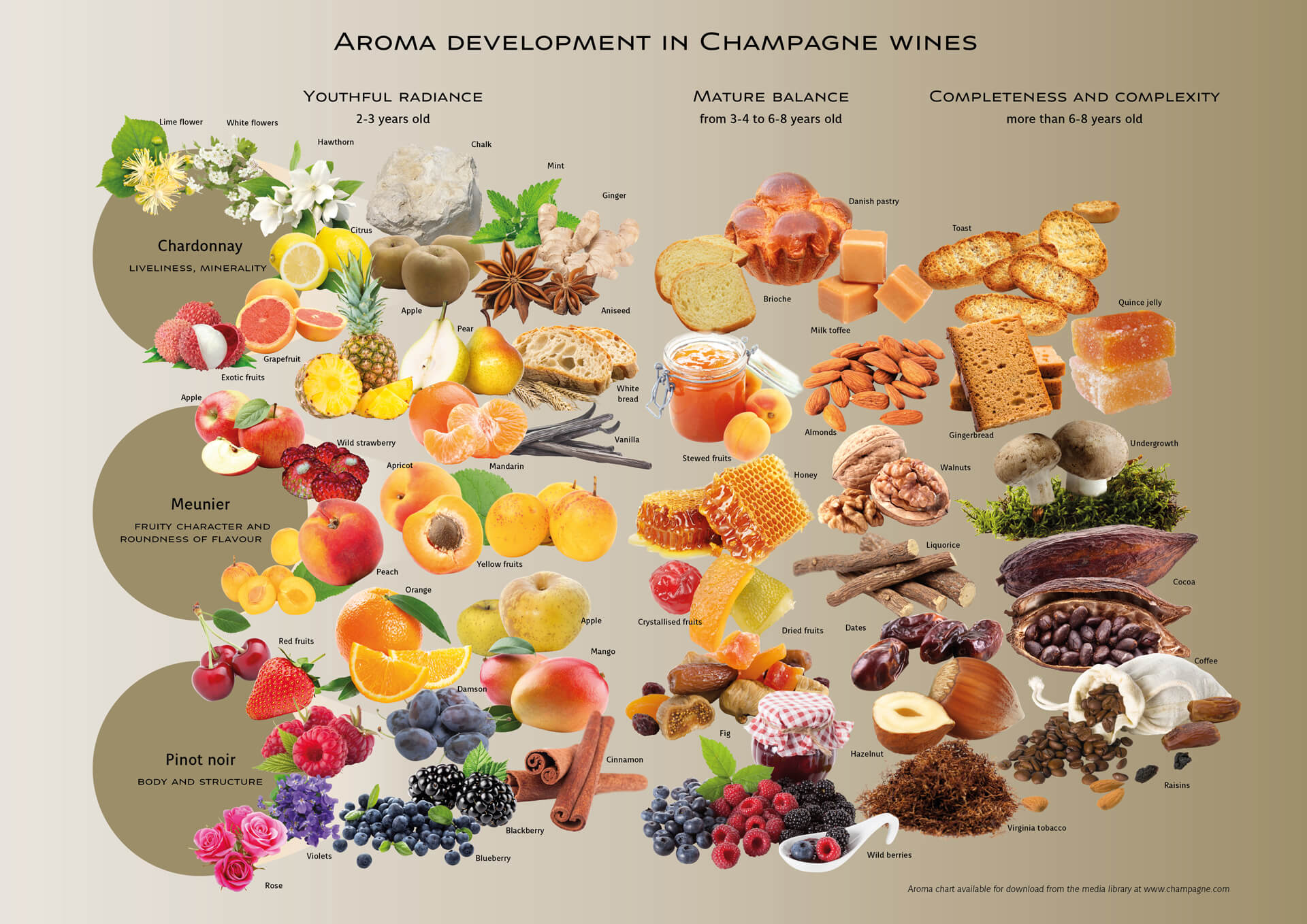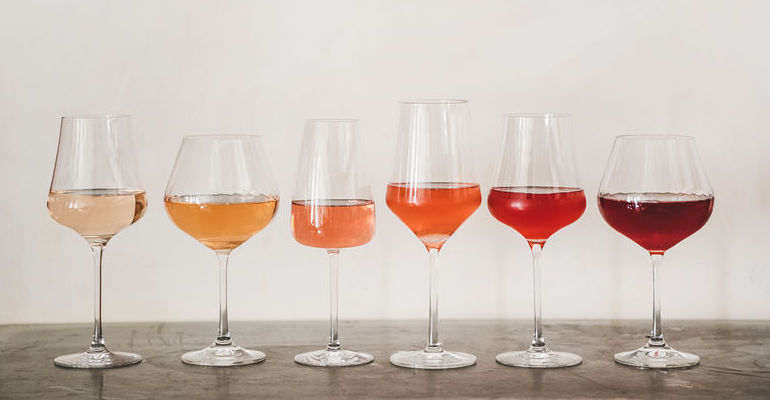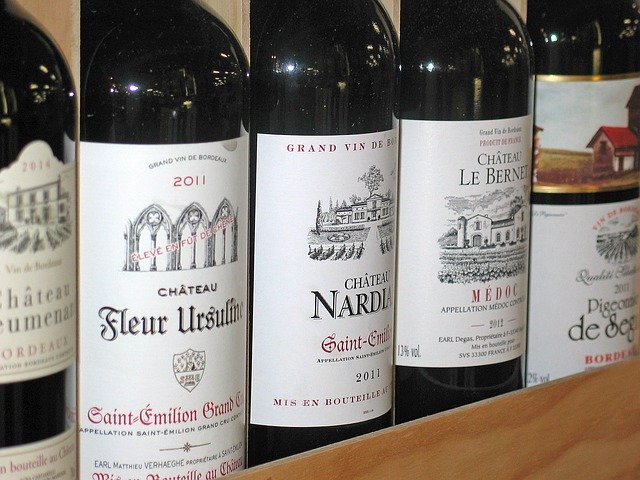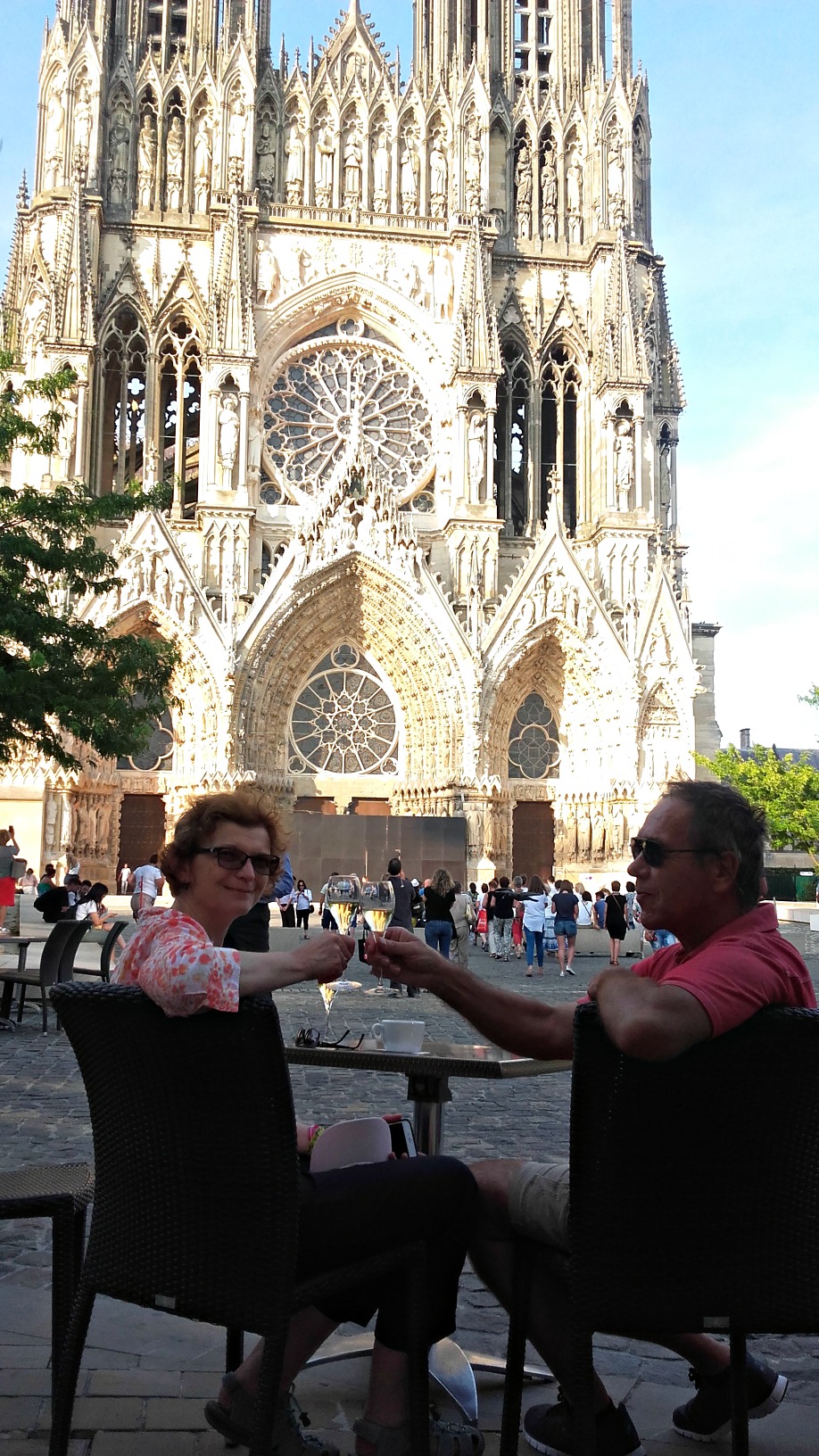My Champagne wine story
Champagne wine explained by a Champagne native

I was exposed early on to the Champagne wine traditions and the art of celebrating with Champagne. Indeed, as a native of Reims, the capitale of the Champagne region, my parents knew several grape growers and as a kid I often played in the vineyards and the cellars.
My friends and colleagues think I am a Champagne specialist because of this early in life immersion. In this article, I share with you my Champagne story, how the wine is made, based on science and my experience. I will take you through the steps of winemaking, including some anecdotes, tips for tasting sparkling wines, and references for further reading.
Champagne wine or Sparkling Wine?
Champagnes are sparkling wines, however grown and made in a specific geographic location in France, as shown on the map below, and regulated by an appellation system. Sparkling wines made under the appellation Champagne can be labelled Champagne wines.

By DalGobboM¿!i? - Own work, CC BY-SA 4.0, Link
Sparkling wines made outside of the region cannot be labelled as such. In France, sparkling wines produced in Alsace or Burgundy are labelled as Crémant for example. Champagne natives tend to be chauvinistic about our region and can become defensive when sparkling wines are called Champagne. BUT don’t read me wrong, there are excellent sparkling wines out there; my favorites are produced in cool climate regions such as Ontario in Canada, Tasmania, or Anderson Valley, California. These are wines I drink most often actually as Champagne wines remain expensive. I also plan next summer to visit the recently developed British estates producing sparkling wines.
Champagne wine appellation regulator
Champagne winemaking is highly regulated by a professional body called the Comite Interprofessionel du vin de Champagne or CIVC. This committee decides on the harvest start date, the total grape tonnage to be harvested and volume of wine produced. This sounds undemocratic however thanks to this rigor, the Champagne wine producers are able to deliver consistent wine quality and monitor the overall production and market of their products. This is the only wine producing region that I know of with such a rigorous supply chain management.
Champagne wine making
Three grape varietals
Three grape varietals are grown in the Champagne region: Pinot Noir, Pinot Meunier, and Chardonnay. The Pinots are red skin grapes with white flesh. Chardonnay grapes have a yellow-greenish skin and clear flesh; when Champagne wine is produced solely from Chardonnay, it is marketed as “Blanc de Blanc” [white (wine) from white (grapes)]. Some sparkling wine producers have introduced the term “Blanc de Noirs” [white (wine) from red (grapes)] for wines made from Pinot grapes.
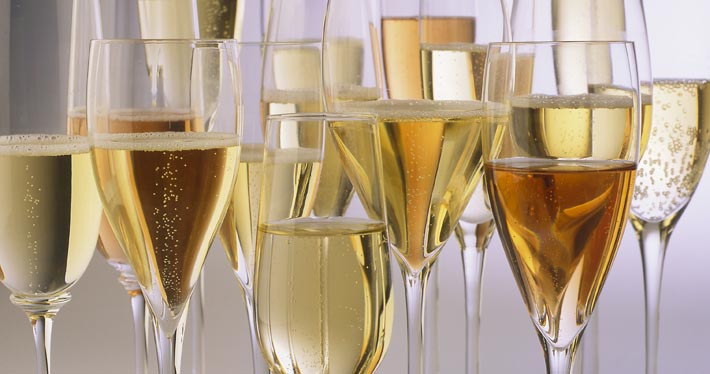
Most Champagne wines are white wines however, rosé sparkling wines are also produced from the red grapes by skin maceration to tint slightly the wine with red hues. [Photo Source]
Two fermentations
Champagne and most sparkling wines are made with two fermentations:
1- the freshly pressed grape juice goes through alcoholic fermentation in steel tanks, for the yeasts to transform the grape sugar into ethanol. Note that it is authorized in Champagne to add white sugar to the juice if the grape sugar content is too low. This process is called chaptalisation, named after Mr. Chaptal.
2- the still wine is then bottled and inoculated with new yeasts that will produce the bubbles, the carbon dioxide gas [CO2], in the bottle; this second step is referred as secondary fermentation.
Note that some cheap sparkling wines are not made through double fermentations, but by adding carbon dioxide in the wine tank prior to bottling, like my favorite soda!
Creating the Champagne signature: the art of Assemblage
Before the secondary fermentation, the Cellar Master creates the wine blend made from the new wine blended with aged wines to complement the flavor profile; this blending phase, called Assemblage, ensures consistency of the wine flavor vintage after vintage. This is a critical step in Champagne making, where in fact Art meets Science. Over the years, each Champagne House has developed its specific flavor profile, the Champagne House signature style. I think it was a very smart way to build loyalty with their consumers.
You may have heard that Pol Roger was the favorite wine of Sir Winston Churchill and Bollinger (or Taittinger depending on the reference source) the favorite bubbly of Agent 007.
What’s your favorite Champagne House?
Bubble Making
Once the wine blend has been created, it is bottled with the second yeast inoculum and sugar to boost the secondary fermentation, the bottles rest laid flat for at least 12 months. Some houses keep them this way for 18 months or more for the special cuvées. This resting period is a very active period for the yeasts who produce the bubbles. In this environment the yeasts eventually die after producing all the CO2 (a deposit can be seen in each bottle as shown in the picture) and slowly break down.
This resting time enables the wine to develop even more its particular aromas that are not so prevalent in still wines such as leesy, creamy, nutty, or spicy.
Getting rid of dead yeasts by Riddling and Disgorging
Now, nobody wants to drink dead yeasts, right? So the next operations will help get rid of them. First, by Riddling, or remuage in French.
The bottles are placed on pupitres horizontally and every day are rotated 1/8th to the right or the left with an increased angle, to progressively bring the bottle vertical, neck down. Traditionally, this meticulous operation was done by a riddler who could riddle thousands of bottles a day. Riddlers were as important and as respected for their expertise as the Cellar Masters in those days. Now, riddling cages make this step faster in large commercial operations.
The art of riddling Champagne bottles (before and now)
At the end of the riddling phase, the bottles are ready for the next step which is disgorging, aka dégorgeage. Bottles are moved to the bottling line, their necks are first plunged in an ice cold bath which creates an ice cube trapping the dead yeasts, then the bottles are reversed back, decapsulated and the pressure expels the ice cube, a mix of wine and sugar is added to replace the lost liquid and adjust the sweetness to the desired level (called liqueur d’expedition or dosage), then the cork is added and the bottles are rinsed, dried, labelled and ready to go.
When I was a kid, I saw a small scale disgorging workshop, where the winemaker was manually removing the capsule and finishing the wine. I also saw the ladies of the estate meticulously apply the labels on each bottle, the collerette and wrap each bottle in paper and place in a carton ready for shipping. That was a lot of work!
A 2-min video illustrating Disgorgement and Dosage
Dosage liqueur generally contains 500-750 grams of sugar per litre. The quantity added varies according to the style of Champagne:
- doux more than 50 grams of sugar per litre
- demi-sec 32-50 grams of sugar per litre
- sec 17-32 grams of sugar per litre
- extra dry 12-17 grams of sugar per litre
- brut less than 12 grams of sugar per litre
- extra brut 0-6 grams of sugar per litre
"Brut nature", "pas dosé" ou "dosage zéro" contains zero dosage and less than 3 grams sugar per litre
Source: CIVC
Is Champagne wine tasting different from still wine tasting?
The same steps can be adopted for the sensory evaluation of Champagne wine: See, Swirl, Smell, Sip, and Savor, as described in our Wine Tasting Basics article.
What is different of course is the evaluation of the bubbles, visually and in mouth.
The CO2 is dissolved in the wine and becomes bubbles only when the wine is poured in your glass. I was always told that the bubbles were born from impurities in the glass or a glass imperfection, and this is confirmed by physicists from Reims, and well reported in this 2016 article: Time for a fizzics lesson
Visually, fine and abundant bubbles signal good quality craftsmanship, based on my experience. And in mouth, these fine bubbles create a creamy texture. Bubbles should not be aggressive, they should not hurt your gums, tongue or palate like a glass of Perrier water does for me. In addition, fine bubbles don’t make you burp after your first sip! That’s my #1 criteria of a great sparkling wine!
What is the best vessel: a flute or a coupe?
I like the flute to admire the bubbles formation and the wine color as well. The coupe was the glass of choice of the Royals, if you see paintings or pictures from the past. The coupe allows the CO2 to dissipate quicker than in a flute and the wine becomes warm and flat faster than in an elongated glass.
What about the wine aromas?
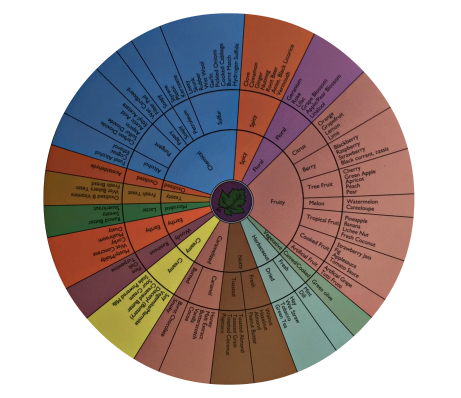
The Sparkling Wine Aroma Wheel was created by Ann Noble to help you identify the particular aromas of sparkling wines and Champagne wines. Like the Table wine aroma wheel, this educational tool is made of 3 tiers, with general aroma categories in the center (Fruity, Nutty, Creamy etc..) and more specific terms on the outer circle. Many aromas are common to the Table wine aroma wheel but many are also specific to sparkling wine.
The Comite Champagne website created a beautiful visual of the aromas, shown below, that you could experience in sparkling wine tasting.
Champagne wine pairing with foods
In my family we have two sayings:
- Champagne wine is the best remedy against any sickness
- Champagne wine can accompany any dish in the meal, from the aperitif to desserts.
I am certainly not qualified to substantiate the first claim. However, for the second statement, I can testify that Champagne wine/Sparkling wine only meals are usually the most enjoyable. First because you don’t mix wine styles and avoid likely next day hangovers. Second, the delicate flavors of the wine are either supported by the dish or let the dish speaks for itself. Therefore, it's a win-win!
There are probably more to say about Champagne wines.
This article covers a lot and I could continue on my favorite wine style.
Please contact me if you have any questions.
Cheers! Santé!
Resources to continue learning about Champagne wines
Books
Christie's World Encyclopedia of Champagne & Sparkling Wine by Tom Stevenson (Author), Essi Avellan MW (Author)
Bursting Bubbles: A secret history of Champagne & the rise of the great growers by Robert Walters
Uncorked: The Science of Champagne by Gérard Liger-Belair (Author), Hervé This (Foreword)
Articles
The Secret History Behind the Royal Love Affair with Champagne
https://www.henrisreserve.com/education/how-champagne-is-made
https://enobytes.com/2012/11/15/how-champagne-is-made/
